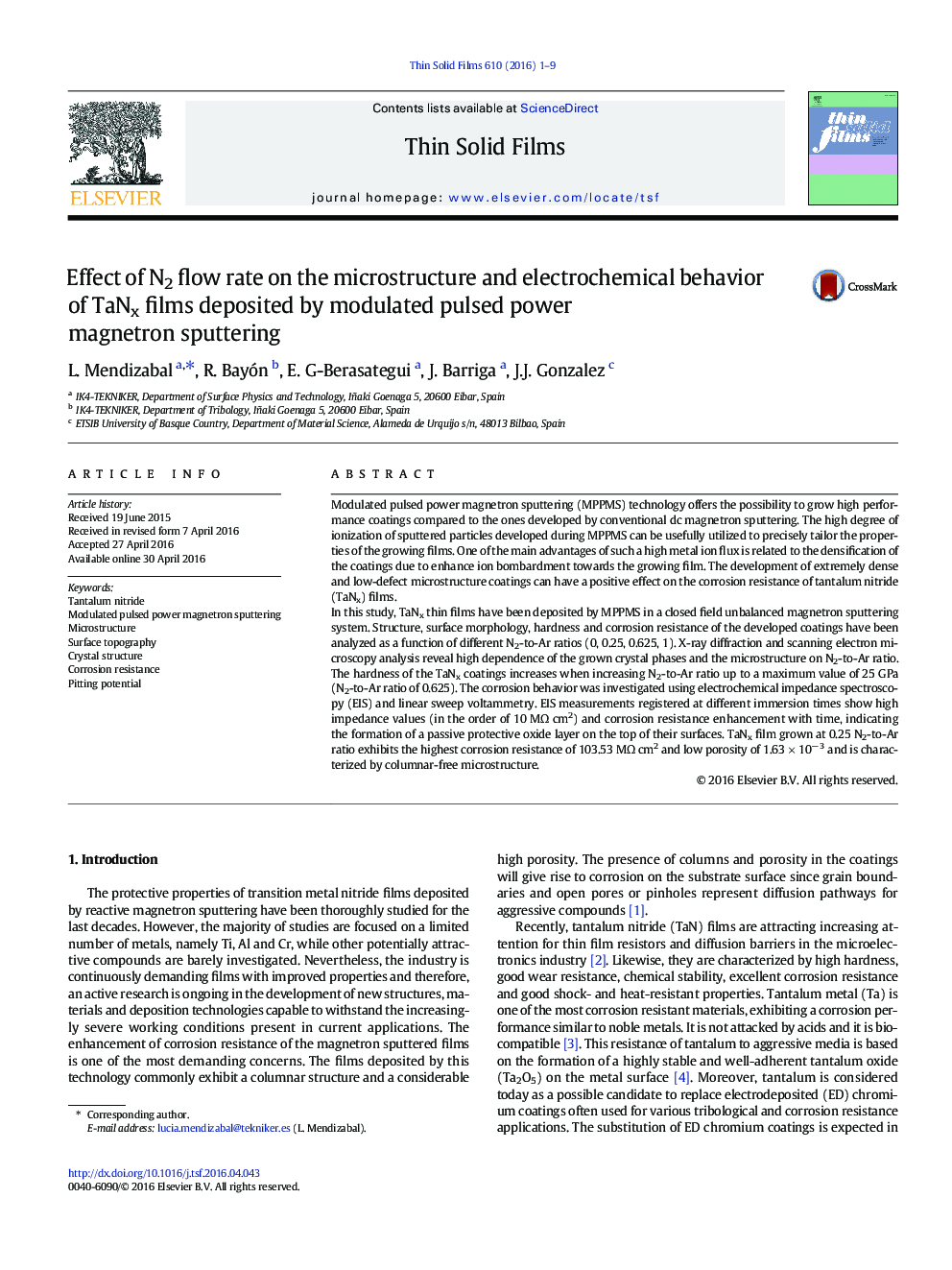| Article ID | Journal | Published Year | Pages | File Type |
|---|---|---|---|---|
| 1663957 | Thin Solid Films | 2016 | 9 Pages |
•TaNX coatings deposited by MPPMS at different N2-to-Ar ratios have been evaluated.•Columnar-free microstructure TaNx films are obtained at 0.25 N2-to-Ar ratio.•Excellent corrosion resistance is observed for TaNx coatings in NaCl 0.06 M.•An excess of nitrogen on the TaNx coatings compromises corrosion resistance.
Modulated pulsed power magnetron sputtering (MPPMS) technology offers the possibility to grow high performance coatings compared to the ones developed by conventional dc magnetron sputtering. The high degree of ionization of sputtered particles developed during MPPMS can be usefully utilized to precisely tailor the properties of the growing films. One of the main advantages of such a high metal ion flux is related to the densification of the coatings due to enhance ion bombardment towards the growing film. The development of extremely dense and low-defect microstructure coatings can have a positive effect on the corrosion resistance of tantalum nitride (TaNx) films.In this study, TaNx thin films have been deposited by MPPMS in a closed field unbalanced magnetron sputtering system. Structure, surface morphology, hardness and corrosion resistance of the developed coatings have been analyzed as a function of different N2-to-Ar ratios (0, 0.25, 0.625, 1). X-ray diffraction and scanning electron microscopy analysis reveal high dependence of the grown crystal phases and the microstructure on N2-to-Ar ratio. The hardness of the TaNx coatings increases when increasing N2-to-Ar ratio up to a maximum value of 25 GPa (N2-to-Ar ratio of 0.625). The corrosion behavior was investigated using electrochemical impedance spectroscopy (EIS) and linear sweep voltammetry. EIS measurements registered at different immersion times show high impedance values (in the order of 10 MΩ cm2) and corrosion resistance enhancement with time, indicating the formation of a passive protective oxide layer on the top of their surfaces. TaNx film grown at 0.25 N2-to-Ar ratio exhibits the highest corrosion resistance of 103.53 MΩ cm2 and low porosity of 1.63 × 10− 3 and is characterized by columnar-free microstructure.
